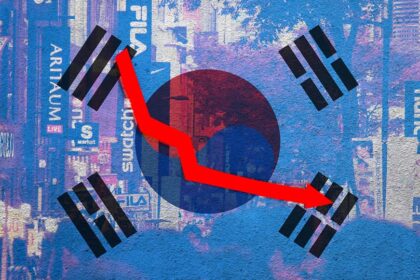Vietnamese Snacks: The New Must-Have Souvenir for Global Tourists
In recent years, Vietnam has witnessed a remarkable transformation in the way tourists experience its culture. No longer content with just sightseeing or sampling iconic dishes like pho and banh mi, a growing wave of international visitors is now filling their suitcases with Vietnamese snacks—turning these humble treats into the country’s hottest souvenirs. This trend, fueled by social media and changing travel habits, is reshaping Vietnam’s tourism and food industries while spreading the nation’s culinary culture worldwide.
- Vietnamese Snacks: The New Must-Have Souvenir for Global Tourists
- How Social Media Sparked the Vietnamese Snack Craze
- What Makes Vietnamese Snacks So Irresistible?
- The Economic Impact: A Booming Snack Market
- Why Are Tourists Choosing Snacks Over Traditional Souvenirs?
- The Role of Convenience Stores and Modern Retail
- Street Food Culture: The Heart of Vietnam’s Snack Scene
- Health, Innovation, and the Future of Vietnamese Snacks
- Broader Implications: Spreading Vietnamese Culinary Culture Worldwide
- In Summary
How Social Media Sparked the Vietnamese Snack Craze
The explosion of interest in Vietnamese snacks among tourists can be traced directly to the power of social media. Platforms like TikTok, Instagram, and Facebook have become virtual travel agents, inspiring millions to explore Vietnam’s vibrant food scene. The hashtag #snackvietnam has gone viral, with videos of foreigners hauling instant noodles, coconut cookies, and local candies racking up millions of views.
One notable example is Filipina traveler Dannica Refe, who spent over a month in Vietnam and returned home with two suitcases packed with snacks worth nearly VND7 million (about US$275). Her TikTok video, showing her packing bags of snacks and instant coffee, quickly went viral, inspiring others to embark on their own “Vietnam snack haul.” Some of her friends reportedly spent even more, motivated by the online trend and the desire to share these flavors with loved ones back home.
This phenomenon is not limited to Vietnam. Across Southeast Asia, tourists are increasingly choosing edible souvenirs over traditional keepsakes. A British tourist recently went viral for bringing home 28 kilograms of Malaysian snacks, underscoring a regional shift in travel habits and the growing influence of digital trends on real-world behavior.
From Pho to Fritters: A Shift in Culinary Tourism
Traditionally, foreign visitors to Vietnam sought out famous dishes like pho, banh mi, or bun cha in restaurants. Today, the focus has shifted to street snacks and local treats, often discovered through online food reviews and influencer recommendations. According to Hoang Nghia Dat, CEO of VNA Travel, tourists now want immersive food experiences—sampling snacks on sidewalks, drinking local draft beer, and hunting for street carts selling specialties like bo bia (Chinese sausage spring rolls).
Thuy, owner of a sweet soup shop in Hanoi, has noticed a surge in foreign customers eager to try local desserts such as cassava pudding and grilled banana in sticky rice. Convenience stores and supermarkets in tourist hotspots are now crowded with international shoppers, a sight that was rare just a few years ago.
What Makes Vietnamese Snacks So Irresistible?
Vietnamese snacks stand out for their diversity, affordability, and unique flavors. Many are made from simple, locally sourced ingredients—like young green rice, coconut, or tropical fruits—but are transformed into a dazzling array of treats. Grilled coconut cookies, hand-pulled malt sugar candies, banana fritters, and savory fried rice cakes are just a few examples that have captured the hearts (and taste buds) of visitors.
For Zane Hanson, a tourist from New Zealand, the variety and low prices of Vietnamese snacks were a revelation. In his home country, street food is uncommon and snacks are typically limited to cookies or chips. In Vietnam, he discovered keo chi (hand-pulled malt sugar wrapped in a wafer with shredded coconut) and shaved ice with fruit syrup, all at prices far below what he was used to.
Maximilian Rolf, a German expat living in Hanoi, has made snacking a daily ritual. He enjoys banana fritters and savory rice cakes dipped in fish sauce with green papaya, describing them as “addictive” and a memorable part of his Vietnamese experience.
Regional Flavors and Culinary Diversity
Vietnam’s snack culture is deeply influenced by regional culinary traditions. In the north, lighter and subtly flavored snacks like banh gio (pyramid-shaped rice dumplings) and xoi (sticky rice) are popular. The central region favors bold, spicy treats such as banh beo (steamed rice cakes), while the south is known for sweeter snacks featuring tropical ingredients, like banh trang tron (rice paper salad) and coconut candies from Ben Tre.
This diversity ensures that tourists can find something new and exciting in every corner of the country, making snack-hunting an adventure in itself.
The Economic Impact: A Booming Snack Market
The surge in snack tourism is more than just a social media fad—it’s a significant economic force. Vietnam’s snack market was valued at US$3.2 billion in 2023 and is expected to grow rapidly, driven by rising incomes, urbanization, and changing consumer preferences. Tourists contribute directly to this growth, spending a sizable portion of their travel budgets on food and drink. According to industry reports, tourists allocate about 24% of their expenses to culinary experiences, with snacks and street food playing an increasingly prominent role.
Local businesses have responded by expanding their offerings and improving packaging to cater to international tastes. Supermarkets, convenience stores, and specialty shops now stock a wide selection of snacks designed for easy transport, making it simple for tourists to bring home a taste of Vietnam.
Global Brands and Local Innovators
The Vietnamese snack sector is a battleground for both domestic and international brands. Global giants like Mondelez (Oreo, Kinh Do), PepsiCo (Lay’s, Poca), and Orion (Choco Pie) compete alongside local favorites such as Kinh Do Corporation and URC Vietnam (Jack ‘n Jill). Imported snacks from Korea, Japan, and Western countries are also gaining popularity, especially among younger, social media-savvy consumers.
At the same time, local entrepreneurs are leveraging digital platforms to launch new snack ideas and reach a global audience. Vietnamese snacks like Ben Tre’s coconut candy are gaining international recognition, and the premium snack segment—featuring health-oriented and innovative products—is on the rise.
Why Are Tourists Choosing Snacks Over Traditional Souvenirs?
There are several reasons why snacks have become the souvenir of choice for many visitors:
- Practicality: Snacks are easy to pack, share, and consume, making them ideal gifts for friends and family.
- Affordability: Compared to handicrafts or luxury goods, Vietnamese snacks are inexpensive yet offer high value in terms of taste and novelty.
- Authenticity: Edible souvenirs provide a direct connection to local culture and daily life, allowing tourists to relive their travel experiences at home.
- Social Media Appeal: Sharing snack hauls and taste tests online has become a way for travelers to document and broadcast their adventures, further fueling the trend.
As one tourist put it, “Vietnamese food is amazing and affordable!”—a sentiment echoed across travel forums and social media platforms.
The Role of Convenience Stores and Modern Retail
The rise of convenience stores and modern retail channels has played a crucial role in the snack tourism boom. Vietnamese shoppers, both local and foreign, are increasingly frequenting minimarts and convenience stores for their snack needs. These outlets offer competitive pricing, attractive deals, and a wide variety of products, making them popular destinations for impulse purchases.
According to a 2024 survey by NIQ, Vietnamese consumers are becoming more discerning and price-sensitive, but remain loyal to trusted brands and are willing to pay a premium for quality. This trend is mirrored among tourists, who often seek out well-known local brands and are influenced by in-store promotions and digital marketing.
Street Food Culture: The Heart of Vietnam’s Snack Scene
Vietnam’s street food culture is legendary, and snacks are at its core. From early morning markets to bustling evening stalls, vendors serve up a dizzying array of treats to locals and tourists alike. Eating on the sidewalk is a communal experience, governed by simple etiquette and a spirit of adventure.
Travelers are encouraged to eat when the locals do, seek out busy stalls, and try whatever the next table is having. Condiments and sauces are essential, allowing diners to customize their meals to taste. For many, the act of snacking in Vietnam is as memorable as the food itself—a chance to connect with people and culture in a way that transcends language barriers.
Tourist Hotspots and Snack Destinations
Major cities like Hanoi, Ho Chi Minh City, Da Nang, and Hoi An are at the forefront of the snack tourism trend. In Ho Chi Minh City, the Ben Nghe Street Food Market offers a beginner-friendly introduction to Vietnamese cuisine, while Hanoi’s Old Quarter is a treasure trove of traditional snacks and desserts. Regional specialties abound, ensuring that every destination offers something unique.
Health, Innovation, and the Future of Vietnamese Snacks
As the snack market grows, health and sustainability are becoming important considerations. Consumers are increasingly seeking nutrient-rich, low-fat, and transparent-ingredient snacks. Gluten-free, keto, and plant-based options are gaining traction, and companies are innovating to meet these demands.
Digital and social media trends continue to shape the market, with e-commerce and direct-to-consumer sales channels expanding rapidly. The rise of delivery apps and online grocery shopping, accelerated by the pandemic, has made it easier than ever for both locals and tourists to access their favorite snacks.
Broader Implications: Spreading Vietnamese Culinary Culture Worldwide
The popularity of Vietnamese snacks among tourists is more than just a passing trend—it’s a powerful form of cultural exchange. As travelers bring home bags of coconut cookies, rice crackers, and instant noodles, they introduce friends and family to the flavors of Vietnam. This grassroots culinary diplomacy helps raise the country’s profile on the global stage and supports local businesses.
Nguyen Tien Dat, vice president of the Hanoi Tourism Association, emphasizes that food plays a key role in tourism development. He notes that tourists bringing home Vietnamese snacks helps spread the country’s culinary culture globally, turning every snack haul into an ambassadorial act.
In Summary
- Vietnamese snacks have become the souvenir of choice for international tourists, driven by social media trends and a desire for authentic food experiences.
- Street snacks and local treats are now as sought-after as traditional dishes like pho and banh mi, with tourists flocking to convenience stores, markets, and street stalls.
- The snack tourism trend is boosting Vietnam’s food and beverage industry, supporting local businesses, and fueling innovation in product offerings and packaging.
- Regional diversity, affordability, and unique flavors make Vietnamese snacks irresistible to visitors from around the world.
- Health-conscious and premium snack segments are emerging, reflecting changing consumer preferences and global food trends.
- By bringing home Vietnamese snacks, tourists are helping to spread the country’s culinary culture and support its growing reputation as a top food destination.












